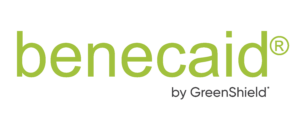Employee Assistance Programs (EAPs) have grown in popularity over the past few years. These popular add-ons are used to help supplement current employee benefits, and they are often standard with an employer offered insurance package.
While helpful, there is a right way and a wrong way to implement such benefits. Also, it is critical that a company understands the fundamental differences between the EAPs and the regular benefits offered so that they can mitigate expenses.
Why EAP?
An employer that offers an EAP or EFAP (Employee and Family Assistance Program) offers coverage for a variety of health and wellness benefits that are not covered under a standard plan, including mental health services, financial counselling, naturopathic treatments, fitness and nutrition advisors, and more. Access to these services can cut down on the expense of benefits in the long term by taking preventative wellness measures for employees, and addressing issues before they get big enough for a traditional benefits claim. An employer that utilizes an EFAP is one that cares about their staff – and they show that they care by offering assistance when it matters the most.
The Benefits of an EAP
- Confidentiality: Employees appreciate supplementary resources along with their usual healthcare benefits. An EAP allows them to discuss sensitive, private matters without worrying that the employer is notified about what is discussed.
- Access to Immediate Assistance: Instead of having to find a mental health provider or counselor, employees have immediate access to a qualified professional ready to help them. Most EAP’s offer a hotline 24 hours per day, seven days per week.
- Fewer Escalations: Work stress can quickly build up, especially for employees in management and other high-stress positions. With the direct access to an EAP when they need it, there may be fewer hours missed at work due to stress, because the employee’s condition is addressed before it can escalate.
- Personal Issues Addressed: The EAP is not just for work issues and work-caused problems; they are also there to help an employee through his or her personal issues.
- Better Productivity: Studies show that when an employee is happy and healthy, they are more productive.
Work with a Third-Party Administrator
According to Benefits Canada, more than 90 percent of employers have some sort of EAP or EFAP in place. Employers are recognizing how strategic these programs are for improving their company productivity, success, and decreasing losses.
Also, an EAP offers significant ROI for a company, when they consider the improvement in level of absenteeism and better productivity rates.



Comments are closed.